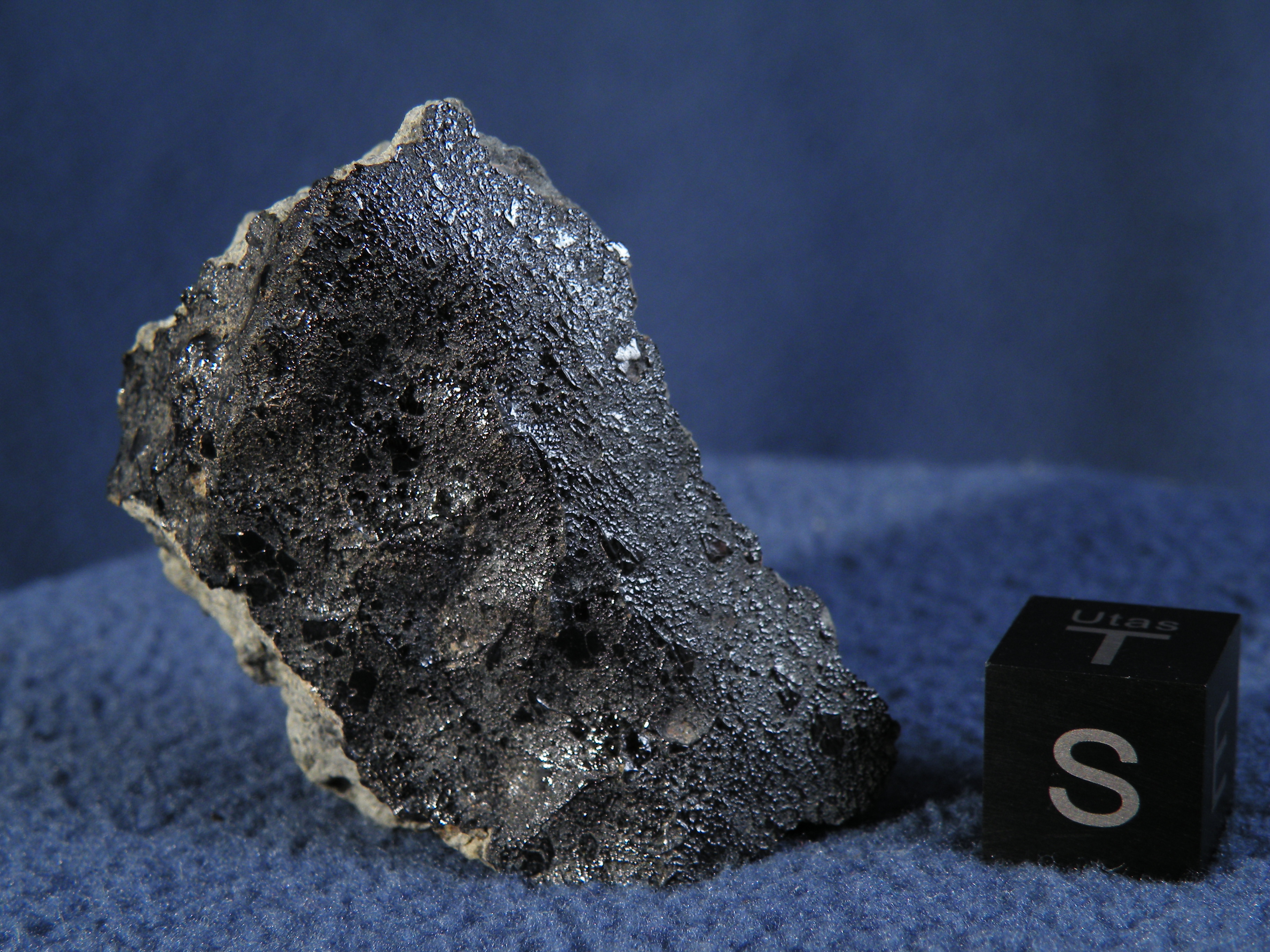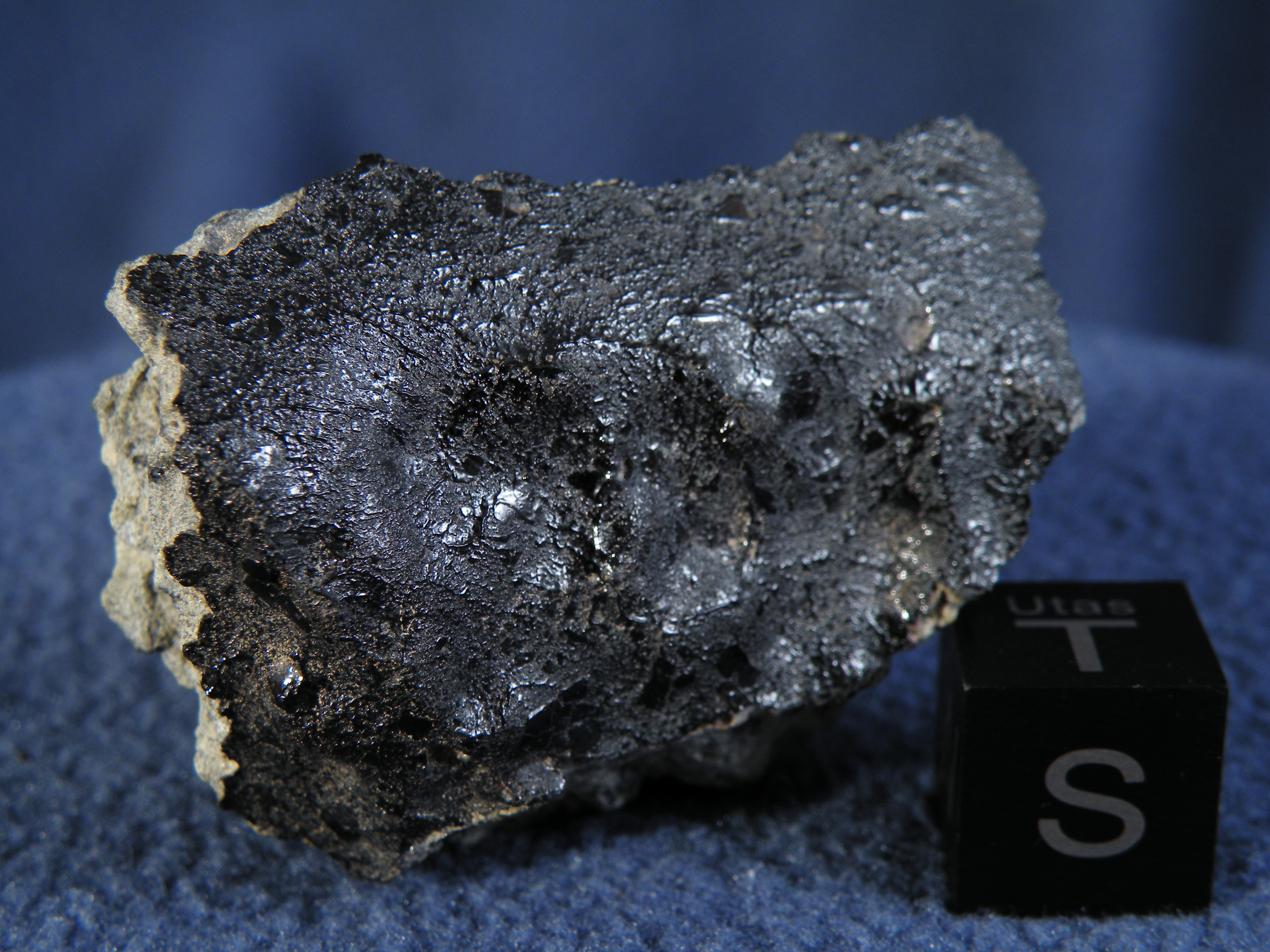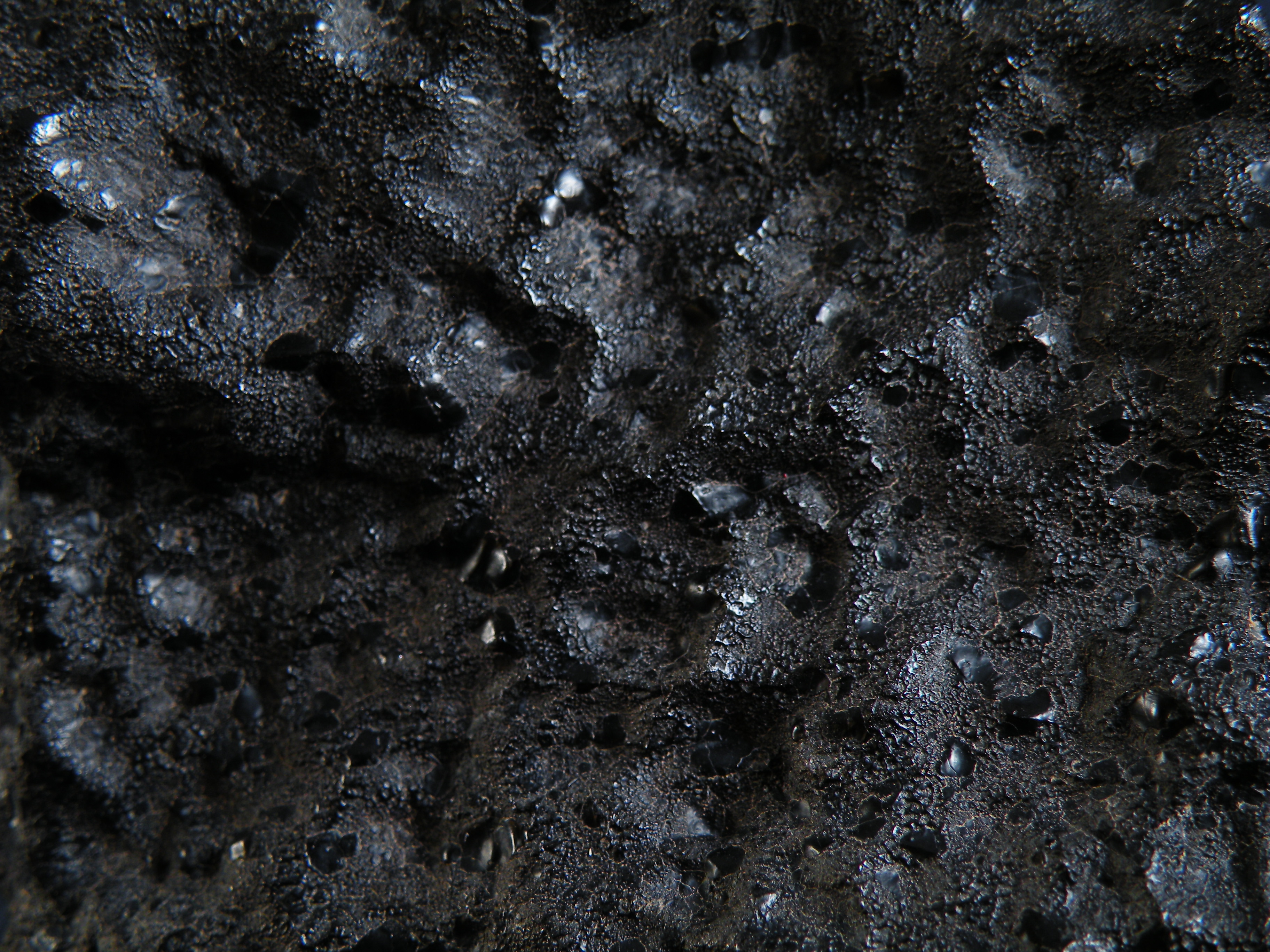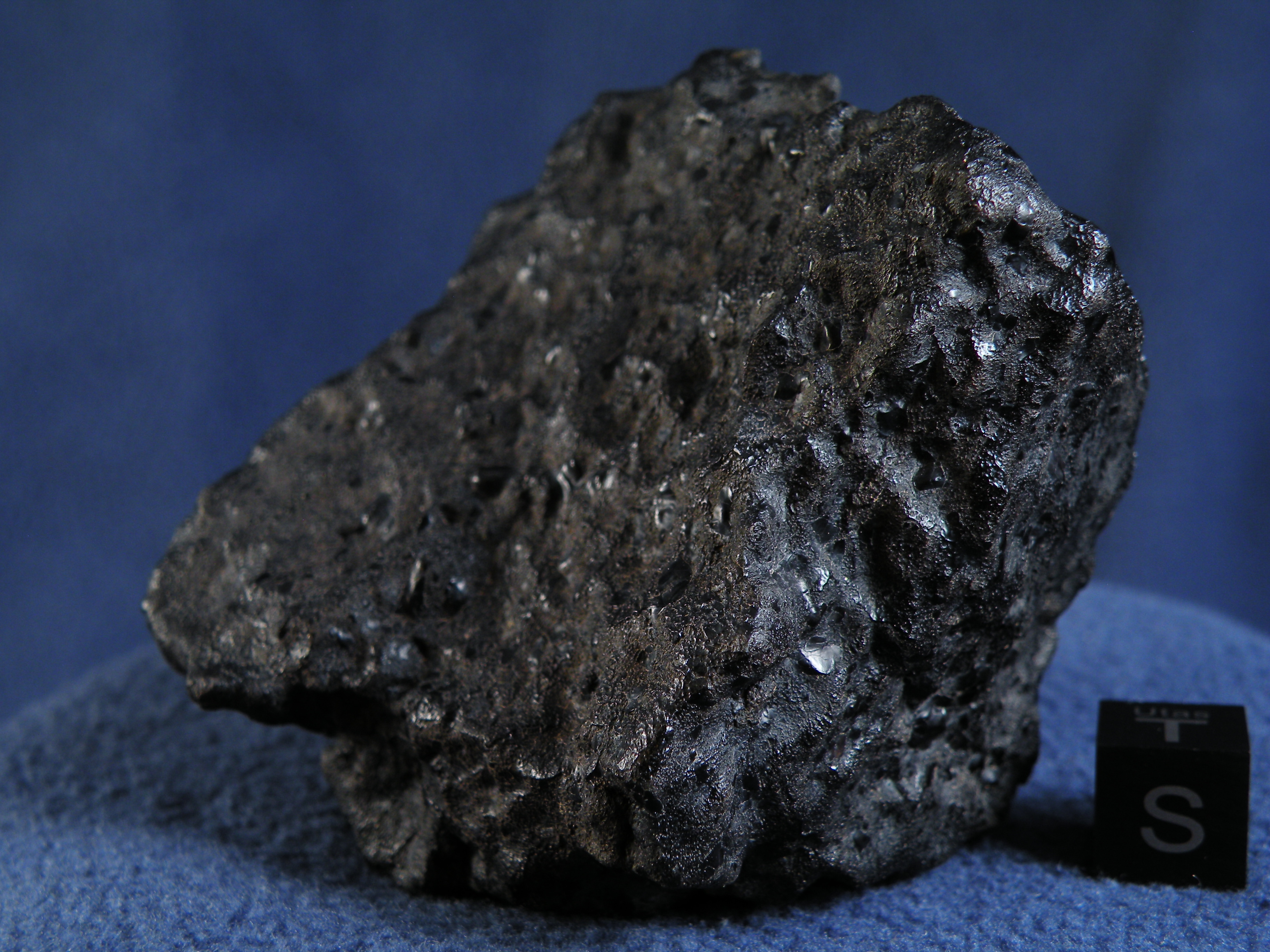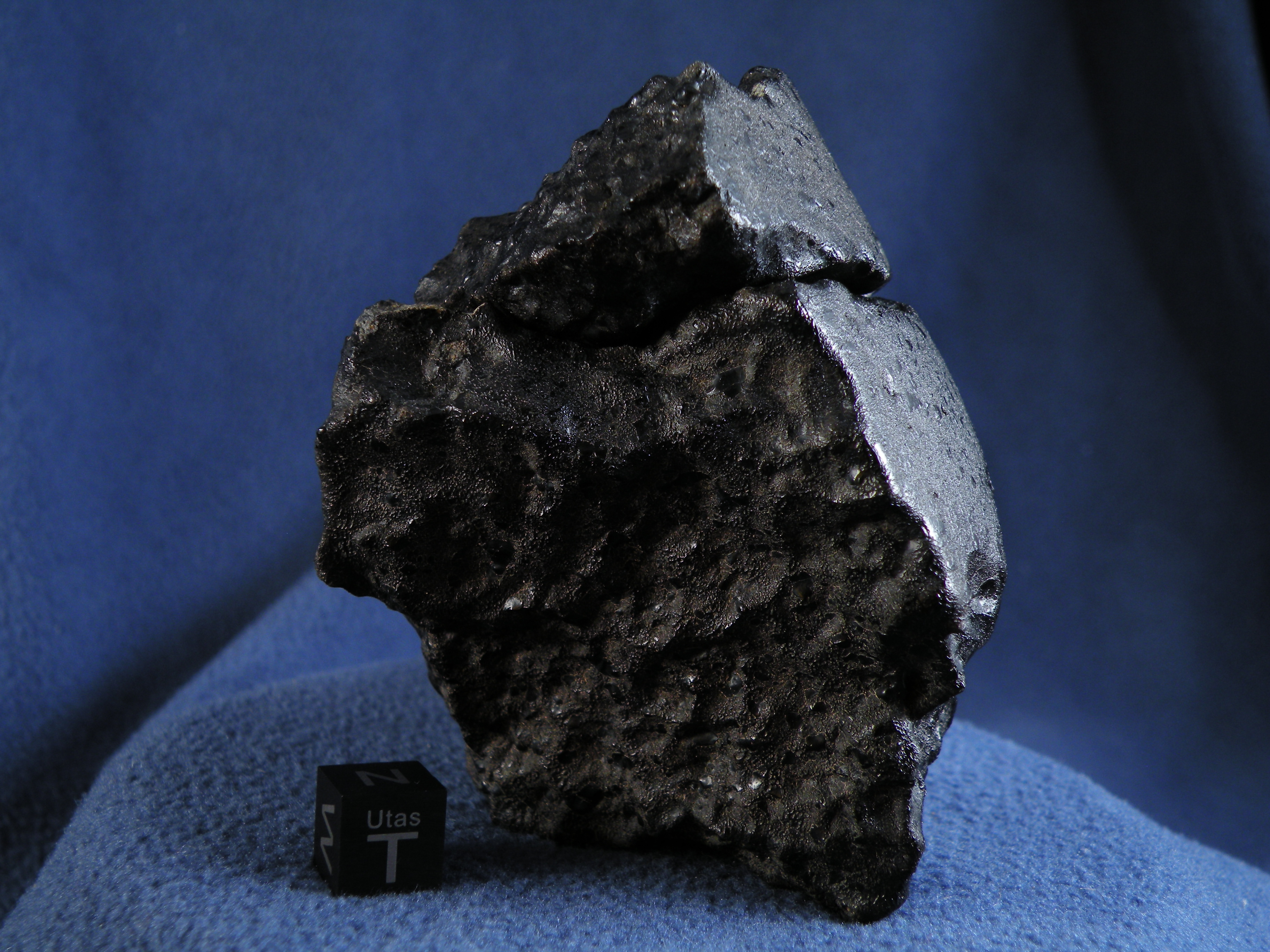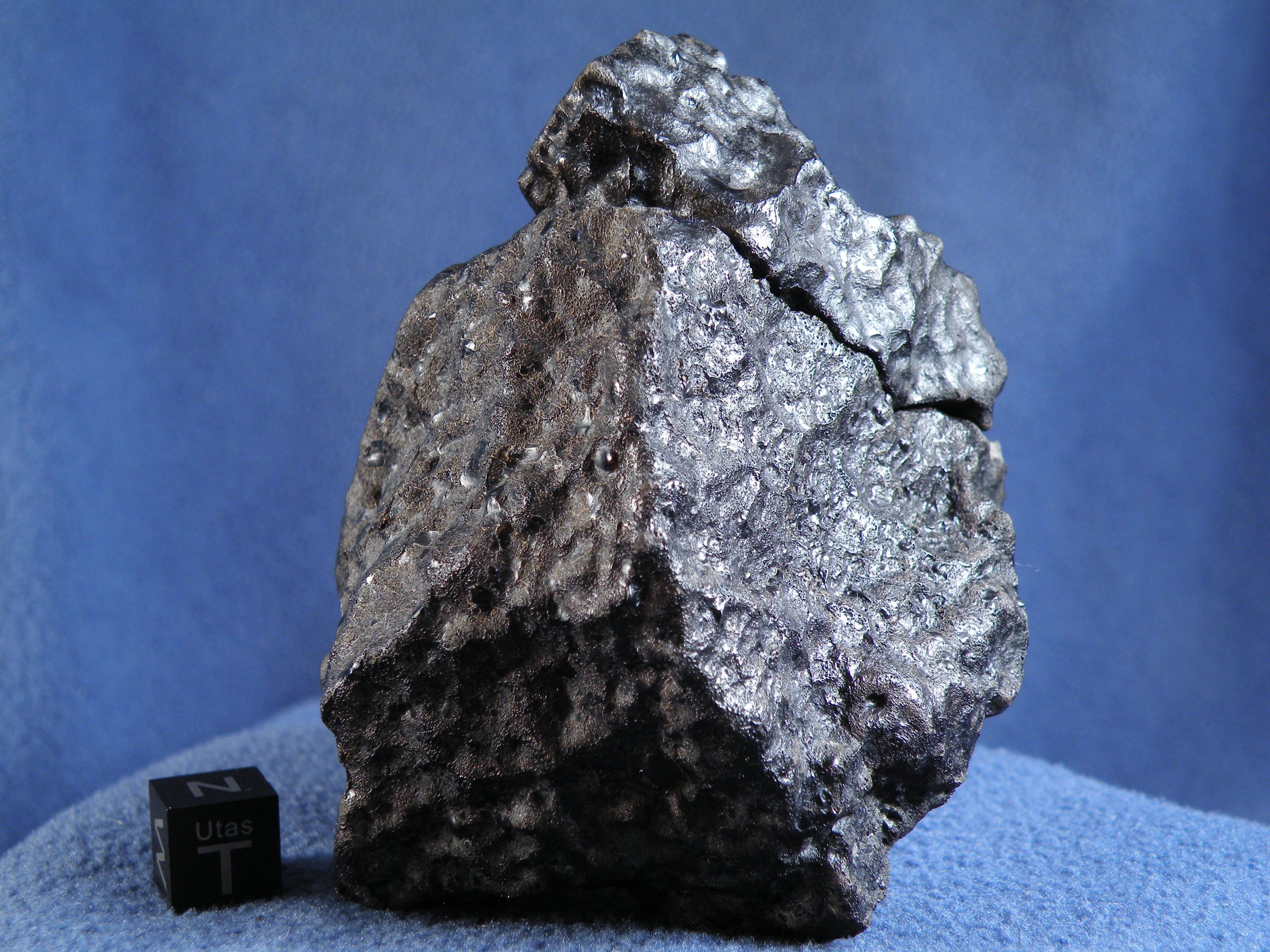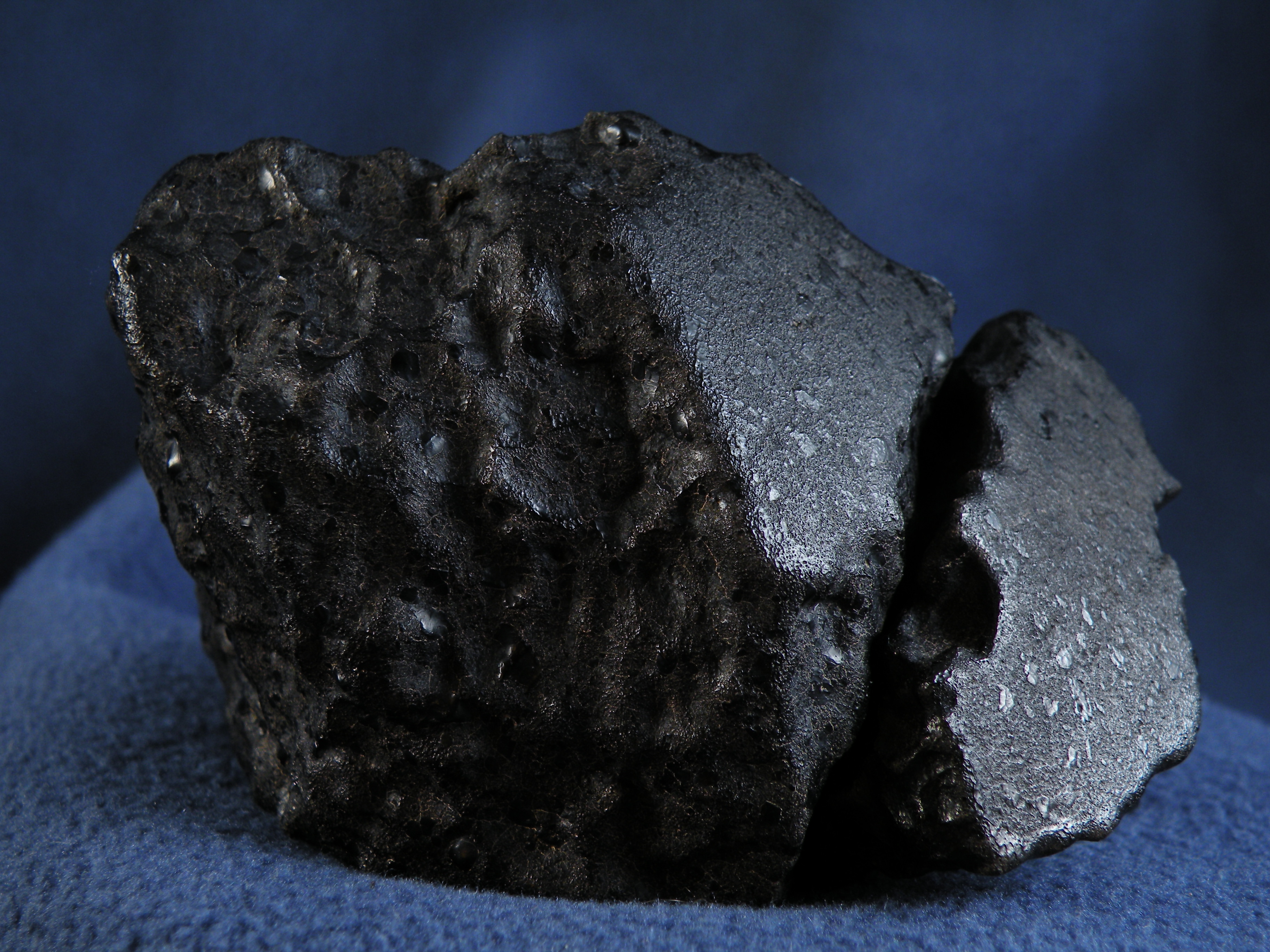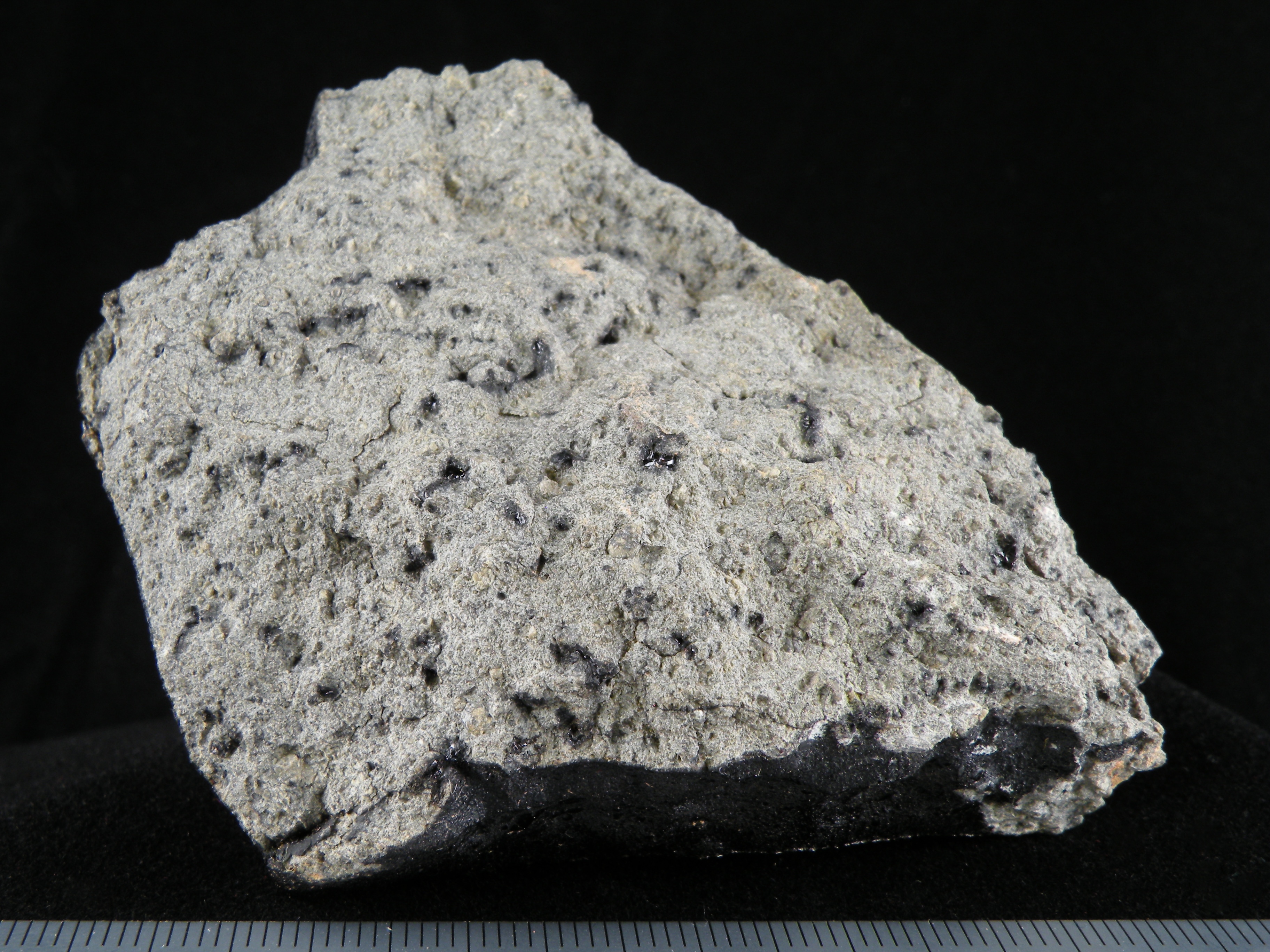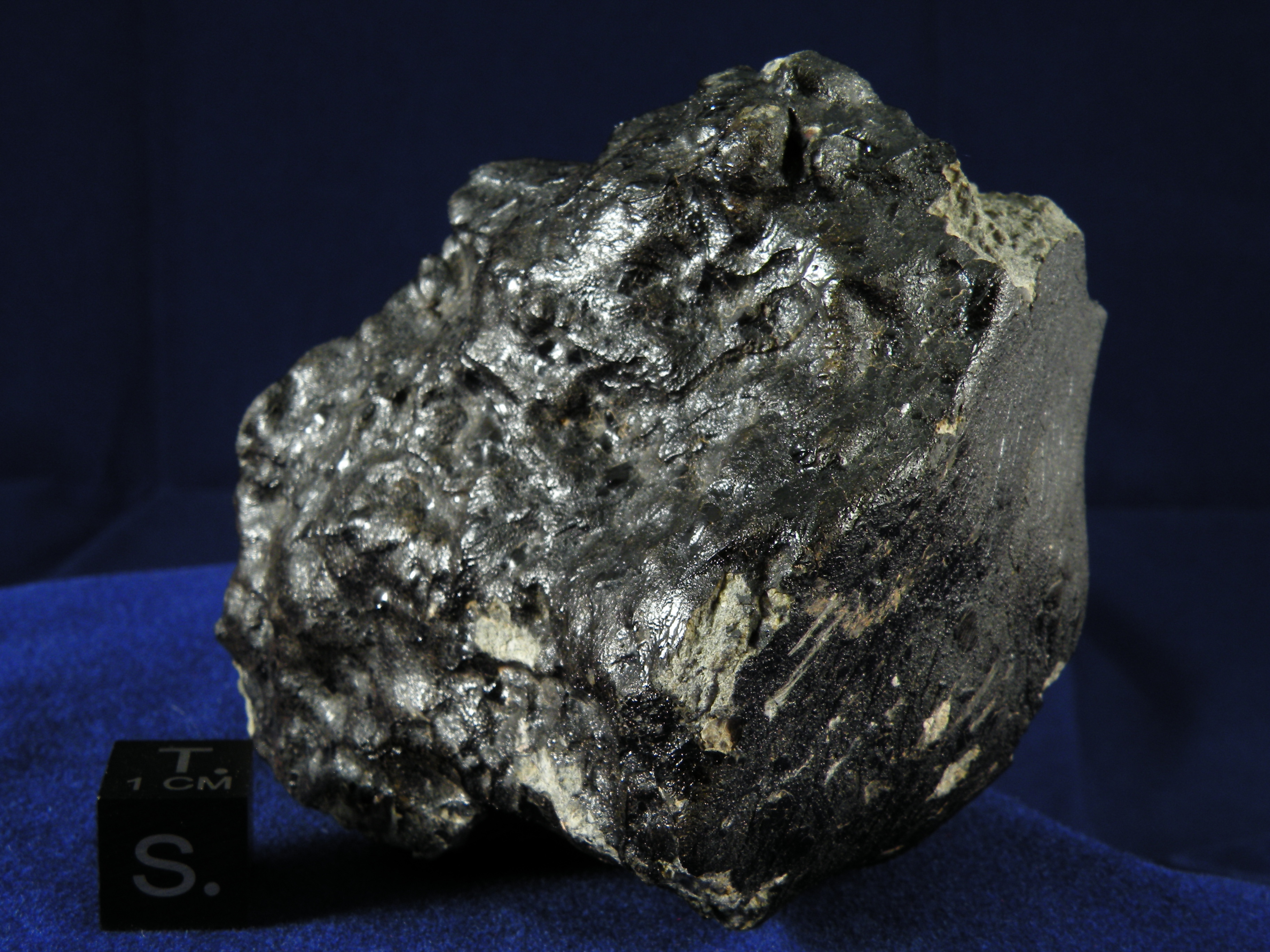Tissint, depleted olivine-phyric shergottite
On July 18, 2011, a fireball was witnessed near a town called Tata, in Morocco. Sonic effects were heard by the sparse population of locals, but the fireball terminated over a remote and desolate valley. Meteorite hunters set out, but they found nothing for several months. That November, some 140 kilometers from the town, the first stones from the fall were found. Approximately 12 kilograms of fragments and individuals have been recovered. Many of the larger stones shattered upon the remote mountainsides where they fell, but some survived.
The meteorite was soon classified as a depleted, olivine-bearing, phyrric shergottite – the fifth witnessed Martian meteorite fall.
Tissint has a fine-grained matrix with abundant pale green olivine phenocrysts, cut by networks of black shock-veins and pockets of vesicular melt.
Some scientists have reported that traces of life may have been found within this meteorite, but such claims are very much open to debate. As a pristine sample of Mars, however, it is certain that this meteorite will be subject to intense study for years to come.





